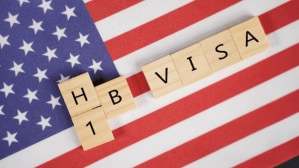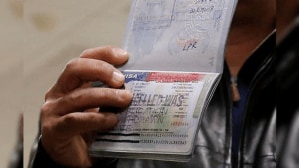SOME COUNTRIES are already stepping up their transition to digital radio, but Norway thinks it can one up them all. The nation’s ministry of culture has revealed plans to switch off FM radio across the country in 2017, making it the first country to scrap conventional broadcasts. The scheduled shutoff, which launches on January 11 that year, emphasises on improving channel choice and quality, as per the Norwegian government. Plus, it’s almost eight times more expensive to use FM as compared to digital radio, which is more reliable for getting messages across in an emergency.
There is a risk that the cutoff will leave some people in the dark. The ministry is quick to note that “more than half” of Norwegians can already listen to local digital radio, but that doesn’t mean that all of them will be ready and willing in two years. And you probably can’t expect a similarly speedy transition in other parts of the world. With a population of 5.1 million and relatively eager adoption of digital radio, Norway won’t have much trouble ditching FM. It would be a much more daunting challenge in larger countries, especially in the US and other places where terrestrial digital radio is still rare.
Officials claim the move will spurn innovation, as the cost of digital transmission will save around $25 million. Trygve Ronningen, CEO and editor-in-chief of P4, Norway’s leading national, private radio station with 24% national market share, says the decision gives Norwegians a final date for the transition to digital radio. Talking about the process that has continued for several years, Ronningen said the work can be finally completed. Ronningen added that this is the best solution for all listeners throughout Norway, as they now have a better radio.
While other countries are pushing digital audio broadcasting (DAB) in lieu of FM radio, Norway is the first country to get rid of the technology entirely. DAB is already growing in popularity around the world—and in Europe especially—so it’s likely only a matter of time before more countries start following suit.
Beyond broadcasting a superior quality of sound, digital radio is also cheaper to transmit than FM, which no doubt factored into Norway’s decision to switch permanently. DAB already offers Norwegians 22 radio channels to FM’s five, and has the capacity to provide a lot more. The major downside is that people who don’t currently have DAB-equipped radios will have to buy new equipment, but such is the reality of changing technology—we’ve been adapting to the future of TV screens, for instance, for years already.
In the US, where old-fashioned radio is still popular, DAB has yet to make an imprint. The number of Americans listening to AM or FM radio has shrunk only marginally over the last decade. As of 2013, 91% of Americans over the age of 12 years still listened to old-fashioned radio at least once a week.
While the rise of Internet-enabled cars (where most radio listening takes place), satellite radio and Internet radio services like Pandora have cut into America’s AM and FM penetration, it seems they won’t kill the country’s traditional radio habit entirely any time soon.
As outdated as FM (and AM) might seem, many people still rely on it, especially in rural areas of the US where Internet connection might not always be reliable.
The UK has yet to set a firm date for the digital radio switchover. The year 2015 was mooted as a potential turn-off date back in the Digital Britain report of 2009—clearly, that’s not going to be the case.
The conditions in the report for the switch-off were similar to those set in Norway: 50% of listening needed to be on digital radio, national DAB coverage had to be comparable to FM coverage, and local radio needed to reach 90% of the population and all major roads.
In December 2013, then communications minister Ed Vaizey disappointed many in the radio industry when he refused to set a firm date for digital radio switchover. The UK, he said, was “not ready for radio switchover… the government simply can’t wave a wand and make it happen”.
All eyes will now be on Norway to see how the FM switch-off affects the popularity of radio in the country, as the rest of the world plots how to follow suit.
For Updates Check Technology News; follow us on Facebook and Twittefm







